After a bumpy, into the wind and waves, start to the trip, the crew and Two Fish  quickly settled into old habits. We were headed to New Caledonia, a French territory on the edge of the Coral Sea. Once again, we were going to visit a country that I hadn’t heard of until our Pacific planning. I introduced the crew to the joy of the portable Starbucks Mocha Latte. “So, that is what took up all the room in my luggage,” Salwa said. However, they quickly joined my camp and looked forward to their daily allotment. Because it is an essential passage pleasure, I had to institute strict rationing to prevent any binge drinkers running down the supplies before Australia. Jason, a non-coffee drinker, was amused by the whole process.
quickly settled into old habits. We were headed to New Caledonia, a French territory on the edge of the Coral Sea. Once again, we were going to visit a country that I hadn’t heard of until our Pacific planning. I introduced the crew to the joy of the portable Starbucks Mocha Latte. “So, that is what took up all the room in my luggage,” Salwa said. However, they quickly joined my camp and looked forward to their daily allotment. Because it is an essential passage pleasure, I had to institute strict rationing to prevent any binge drinkers running down the supplies before Australia. Jason, a non-coffee drinker, was amused by the whole process.
Our first stop, Îles des Pins, received a somewhat mixed review. Many cruisers claim this is one of the best stops in the Pacific. It was a bit early in the season, so the water was too cold for me, but Darren had no issues taking a quick dip. The temperature change was a big shocker for our Pacific blood. We layered on the sweaters in 60 degree (F) weather because we had not seen winter in 3 years. We assumed all of the world’s oceans were over 80 degrees warm. The main beach in Îles des Pins had a touristy restaurant with awful food, but the bay was beautiful and it was a welcome rest stop. We were shocked that the French could produce low quality food but happily ate plenty of carrot salad.
- Approach
- Two Fish in Iles de Pines
- Landing
- Native Pines
Just a few steps away from the main area, we turned down a random path and hiked through the pine woods. This turned out to be one of our favorite walks. Darren tried out a new crab shirt logo (see photo) and a dead snake gave us pause, but we trudged on, eventually finding our way back through someone’s overgrown yard. Cook named the spot the Island of Pines in 1774. Unlike other Pacific islands, where sailors planted pine trees to ensure future spar inventory, these pines seemed to be native. Perhaps a pine cone or two floated over from Australia many years ago?
We had been so excited to explore that we did not think about our dinghy when we went ashore. We had beached the dinghy and then tied her to a tree in anticipation of a rising tide. Lesson learned: we found that as the water came in the small waves splashed into the dinghy. Each wave contained fine sand, leaving us with a very heavy dinghy. Fortunately, we carry a manual bilge pump on board and a water scoop. Jason pumped for quite some time and finally One Fish was light enough for the four of us to drag her into deeper water. After some cleaning the boat was as good as new, but, just to be safe, Jason changed the fuel/water separator on the engine. The next day we left before sunrise for the capital of New Caledonia: Noumea. The night before Jason had drawn a map of the nearby anchored boats to help us depart in the dark. Darren manned the night vision scope and found the yellow no anchoring zone marker. We would have used the radar but it was out of commission, waiting for a new part in Australia.
When we arrived in Noumea, it was blowing a good 20 plus knots. We had come to a marina since our starter seemed to be having problems (Note:we have since installed a new starter and all is running smoothly). So we were down to just one engine. Docking with only one engine is much harder. The marina has no weekend staff and had left us cryptic instructions on our berth. Why do marinas make it so hard? I think my next job will be a marina manager. We thought we had found the correct slip but at the last minute realized it was in use as there were existing dock lines. Jason now had to do a loop through a mooring field full of tiny boats. The tiny boats were moving actively and there was little space for the oversized Two Fish. In such a windy location, two engines would have been helpful while executing the tight turns. Instead Jason used the rudders and blasts of forward and reverse to complete our loop. On final approach Darren called out the distance to the dock and then executed a huge leap to the dock. Salwa, inspired by Darren’s bold leap, copied him in a more modest proportion.
Jason had hoisted the French courtesy flag and our Q (Quarantine) flag before entering New Caledonian waters, as required for all visiting yachts. It seemed like a good thing to also hoist a New Caledonian flag that we had in our collection. Not a good call. This flag indicates that we support secession of New Caledonia from being part of the French state. Two Fish is a politics-free zone and we have no views on any territories. Fortunately, a passer-by gave us a heads up before the angry gendarme could scold us. The rebel flag was struck immediately.
We were in Noumea for a few days; it looks like the multiple bays and large lagoon would be a great place for a holiday. We had dinner with friends from Spirit V and Zoom, Jason replaced a water hose, and Darren and Salwa navigated the back roads. I learned that taxi drivers in New Caledonia can be less than helpful; I might still be waiting for the driver with the bigger trunk (see photo) had we not rented a car for the day. Arriving in Noumea was easy as the Marina did most of the paper work. However, leaving was a three hour mission. We had to visit three separate offices in opposite, far away locations, reminding us of Brazilian immigration procedures.
How could I forget? There was a significant happening in Noumea – Jason’s birthday! We chose a French chain restaurant in hopes of tasty sausages but ended up disappointed. Jason’s plate looked like an odd sack of meat. For the next week, ridiculing this meal became a boat joke. Time for a rescue operation back on Two Fish engineered by Darren and Salwa: Eclairs and Champagne for all.
You might not recognize Australia in the heads up chart view below, but, after leaving North America in September 2015, we were finally just 4 days and 19 hours from a new continent.
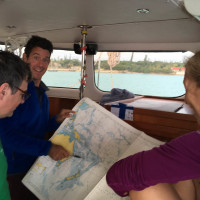
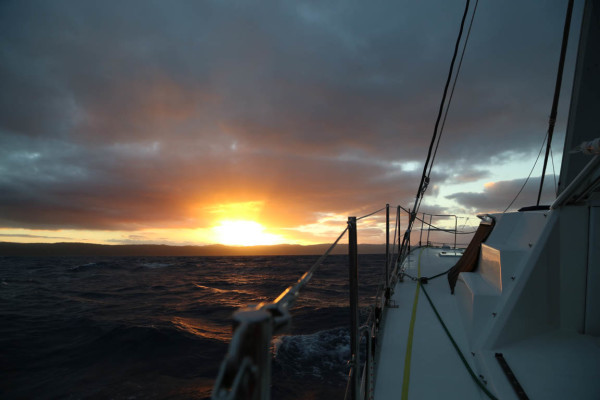
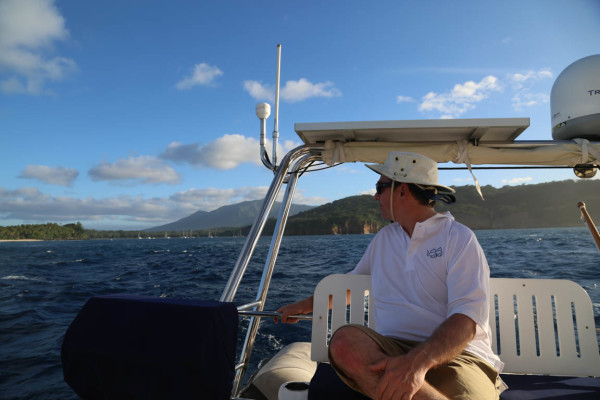

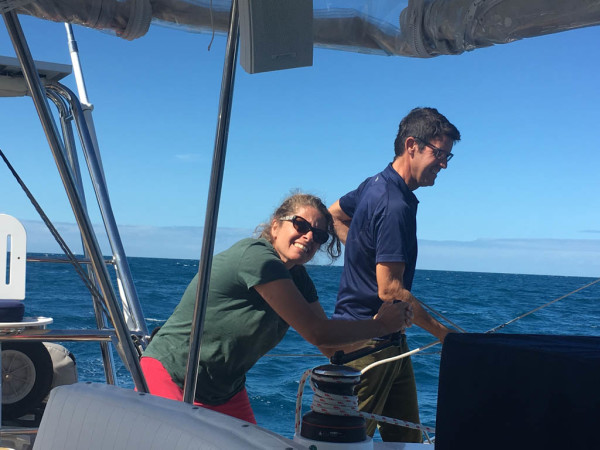


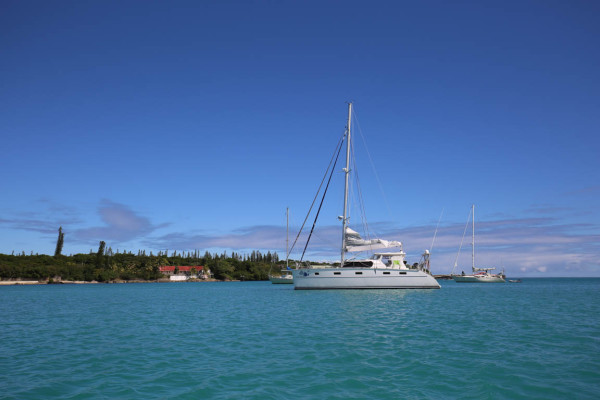

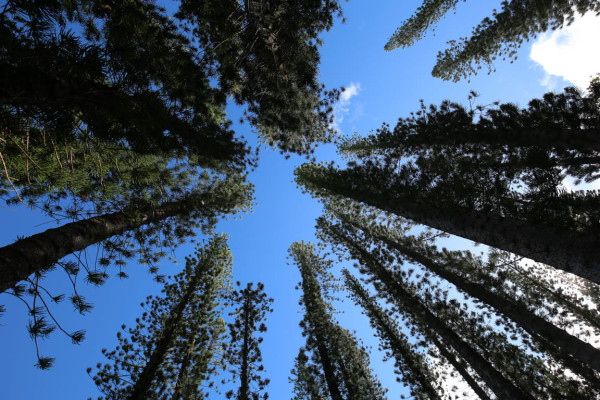
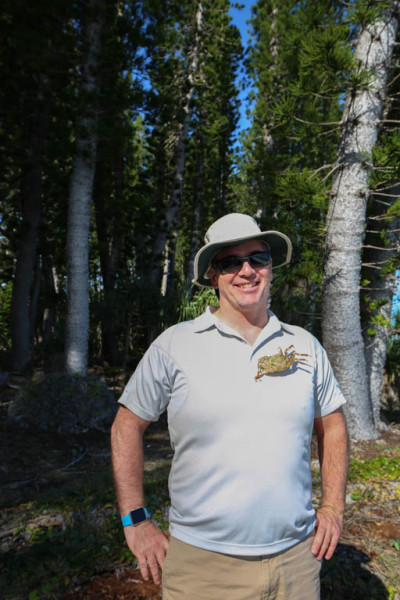

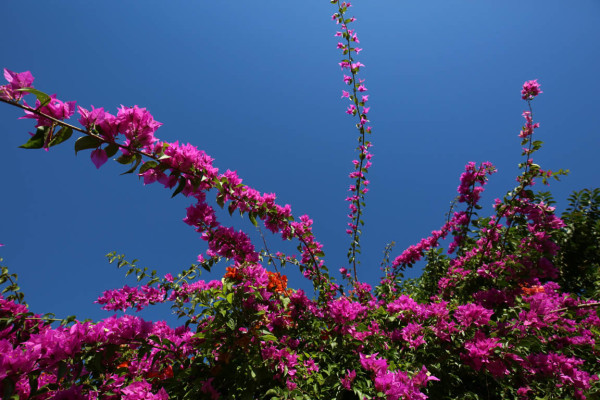
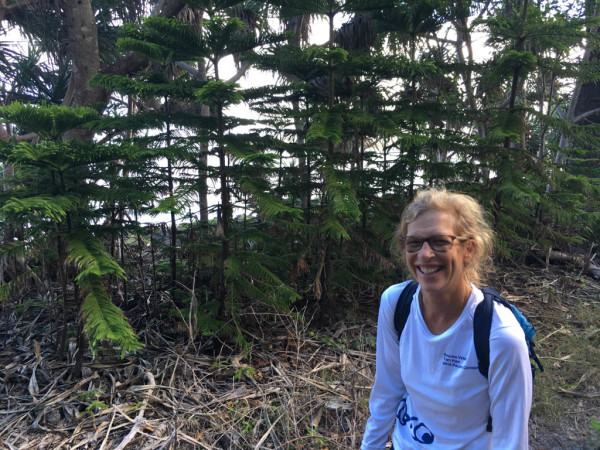
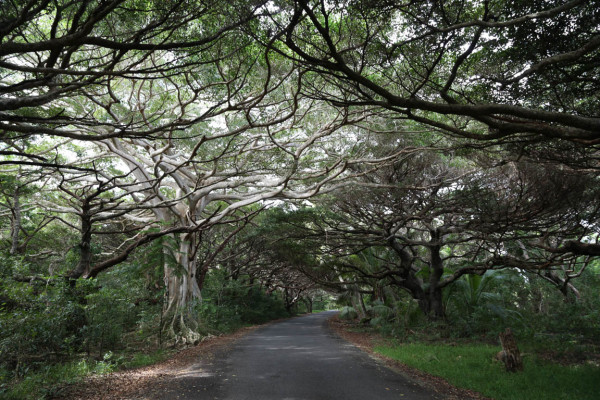
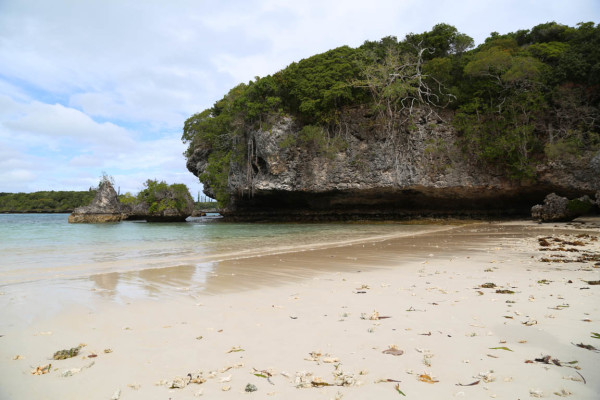
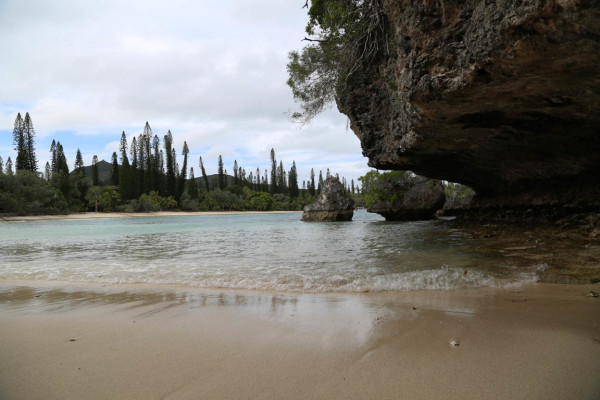
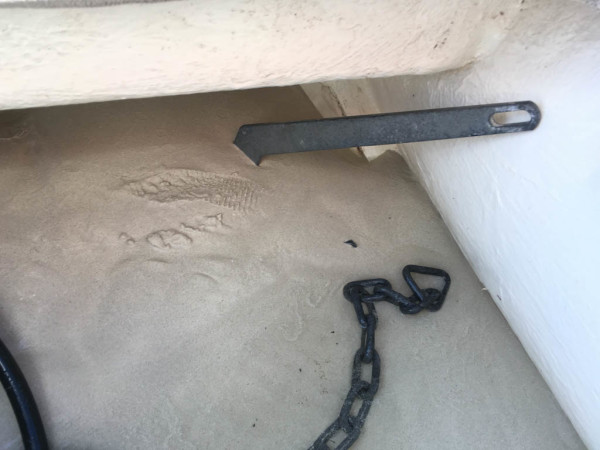
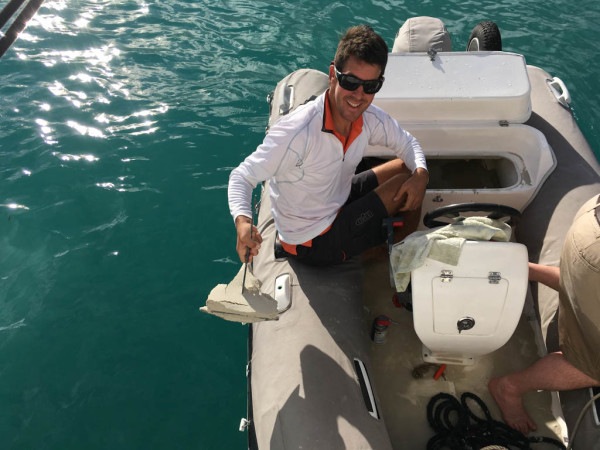
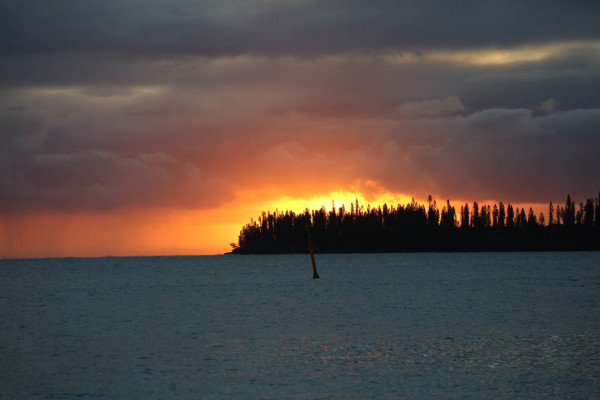
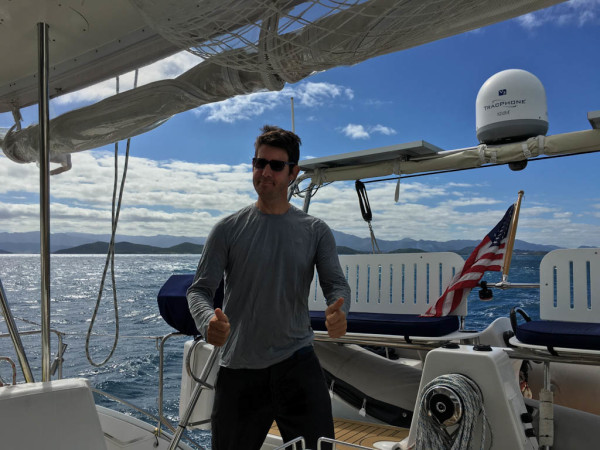
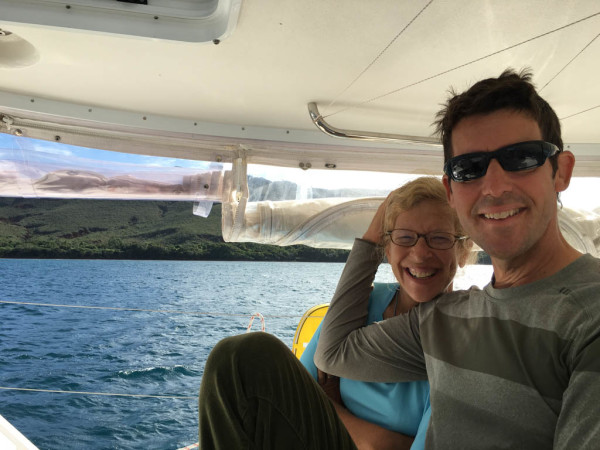
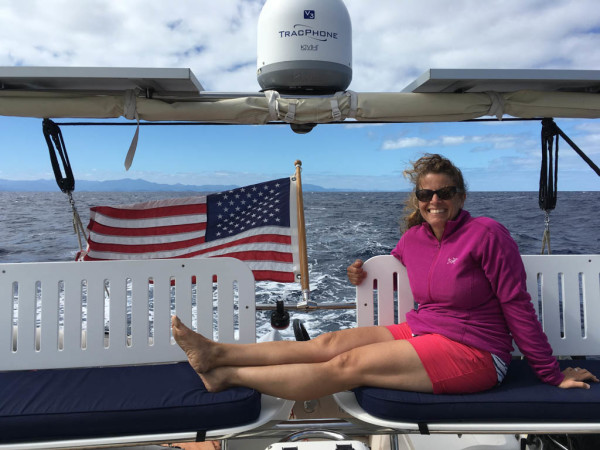
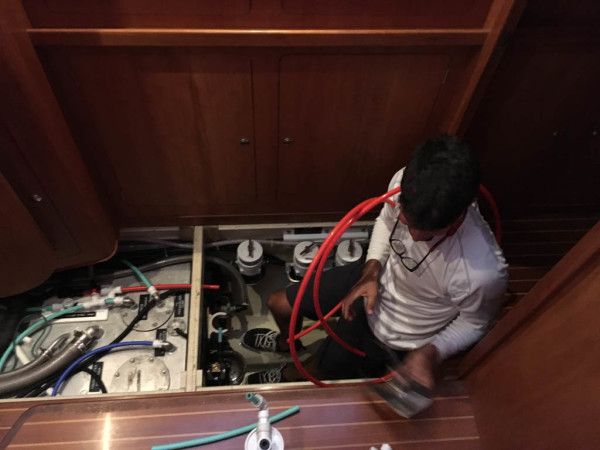
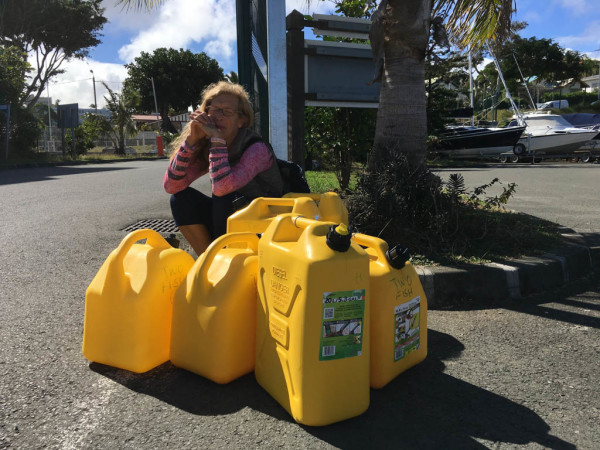
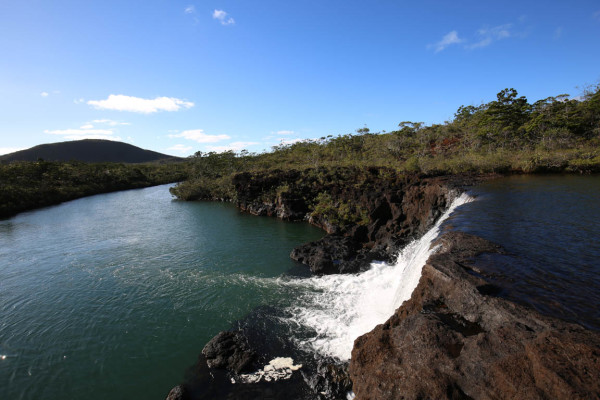

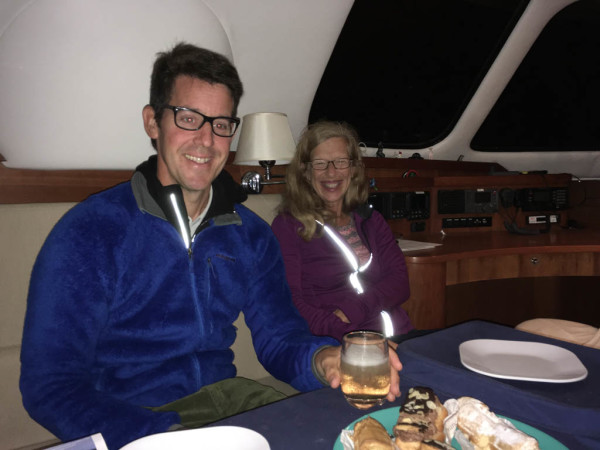
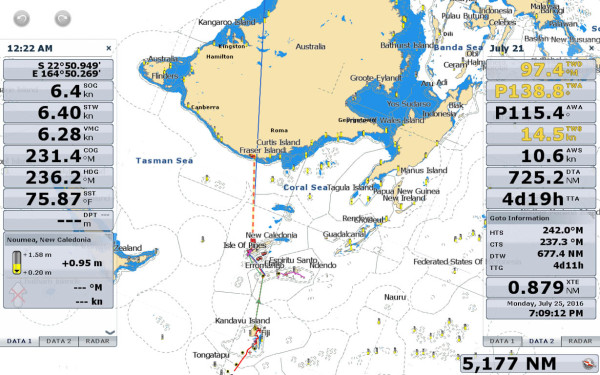
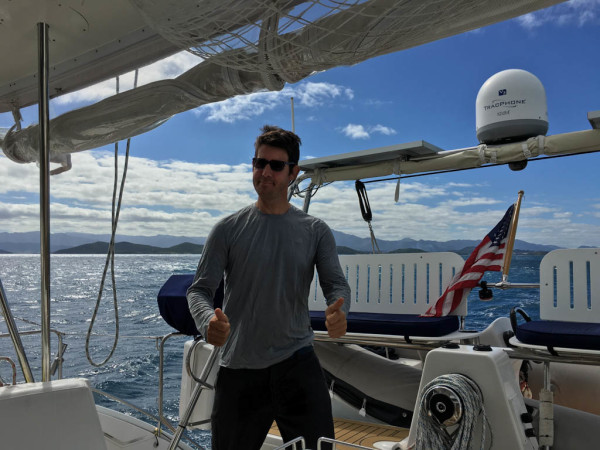
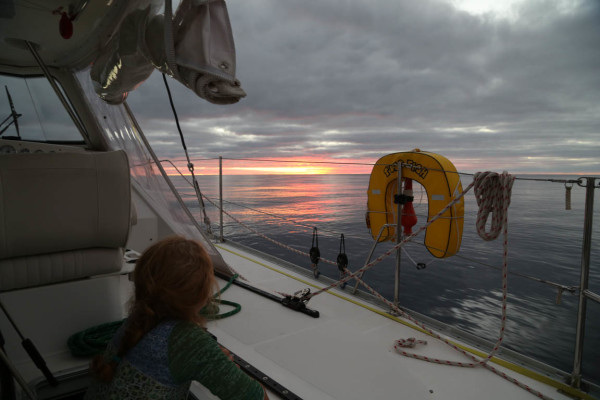
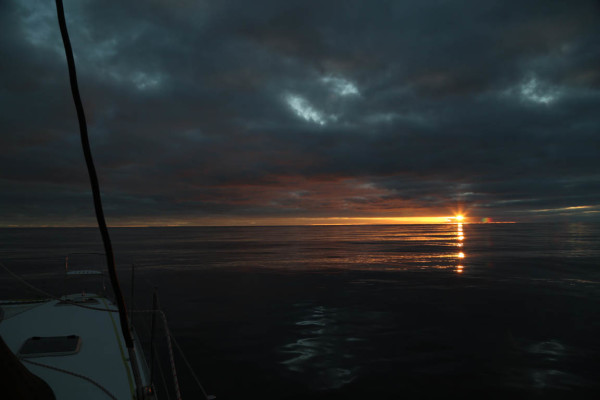


2 Responses to Pine Trees in the Pacific?